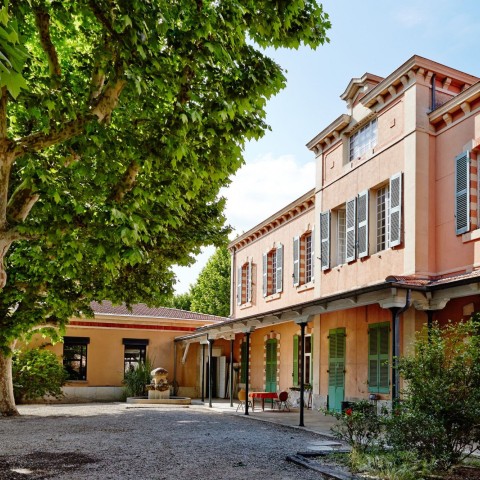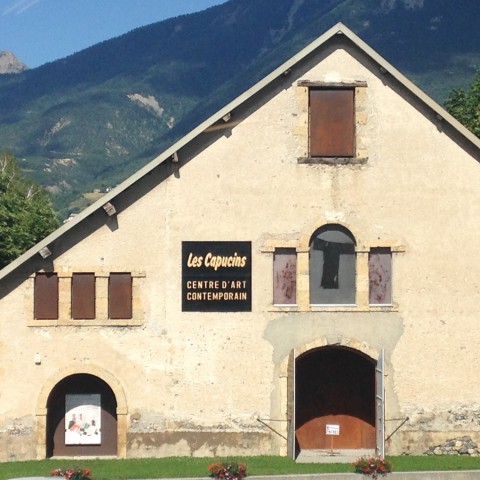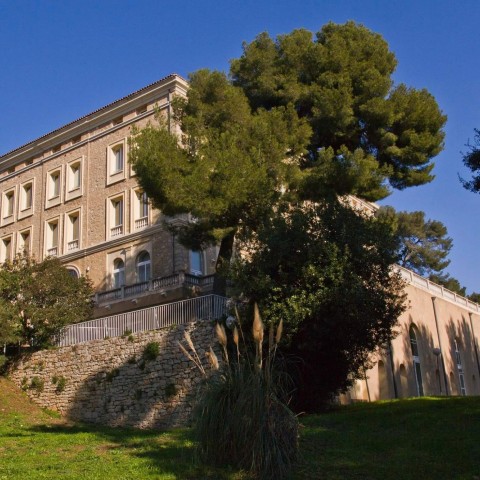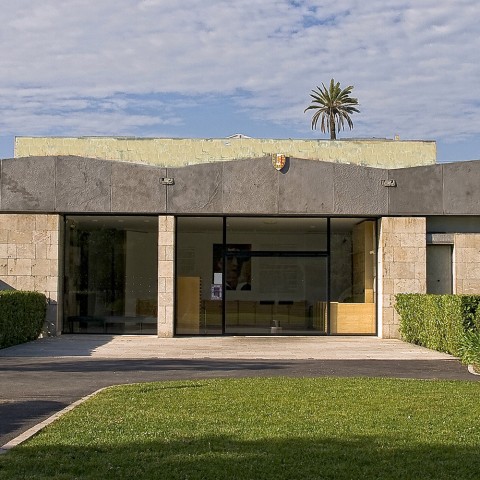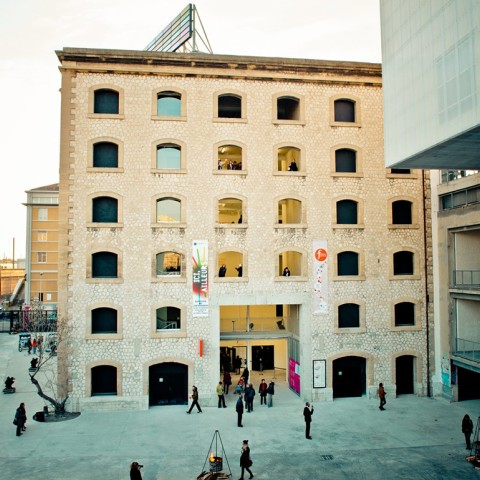Fondation Vasarely
Nestling in the hills above Aix-en-Provence, opposite the Sainte-Victoire mountain, the Fondation Vasarely boasts over 5,000 m² of futuristic architecture where art and science meet. Its hexagonal rooms house a permanent collection dedicated to the work of the master of op-art, as well as temporary exhibitions and a cultural mediation space.
The Architectural Centre of the Vasarely Foundation was built in 1976 by the French artist of Hungarian origin Victor Vasarely. It houses in a monumental architecture works of Vasarely integrated into the walls of the building. It was classified as an Historical Monument in 2013 and since 2020, it has been known as a “Musée de France”.
Nestling in the hills above Aix-en-Provence, opposite the Sainte-Victoire mountain, the Fondation Vasarely boasts over 5,000 m² of futuristic architecture where art and science meet. Its hexagonal rooms house a permanent collection dedicated to the work of the master of op-art, as well as temporary exhibitions and a cultural mediation space.
The Architectural Centre of the Vasarely Foundation was built in 1976 by the French artist of Hungarian origin Victor Vasarely. It houses in a monumental architecture works of Vasarely integrated into the walls of the building. It was classified as an Historical Monument in 2013 and since 2020, it has been known as a “Musée de France”.
Programme
A life in colours, Claire Vasarely
The Fondation Vasarely is devoting an unprecedented retrospective to Claire Vasarely (1909-1990), an artist who has remained in the shadows for too long. The exhibition reveals the wealth of her work through paintings, posters, textiles and previously unseen archives, testifying to her role in the 20th century avant-garde.
Produced in partnership with the Vasarely Museum in Pécs (Hungary).
Access
Fondation Vasarely
1, avenue Marcel-Pagnol
13090 Aix-en-Provence
+33 (0)4 42 20 01 09
fondationvasarely.org
Wednesday to Sunday: 10:30am – 6:30pm.
Locate other art venues in the vicinity on the map.
Discover our address book
PLACES TO STAY
• La Maison du Collectionneur: a confidential and intimate address to sleep in the heart of the Mazarin district. (Aix-en-Provence)
PLACES TO EAT & DRINK
• Mademoiselle Wine: a wine cellar specialising in local champagnes, just a stone's throw from the magnificent Place Richelme market. (Aix-en-Provence)
• La Méduse: a bar where the welcome is as good as the quality of the wines and the small plates to share. (Aix-en-Provence)
• Gallifet Kitchen: restaurant in the garden of the Hôtel de Gallifet from June to October, tea room from October to May. (Aix-en-Provence)
PLACES TO DISCOVER
• Le Pavillon de Vendôme: museum and sumptuous French gardens. (Aix-en-Provence)
• Promenade de la Torse: a riverside park ideal for a country walk. (Aix-en-Provence)















































